A safety review of the Lyme-East Thetford bridge
The bridge is in poor condition, but it's not in serious or critical condition, nor is it in imminent danger of collapse.
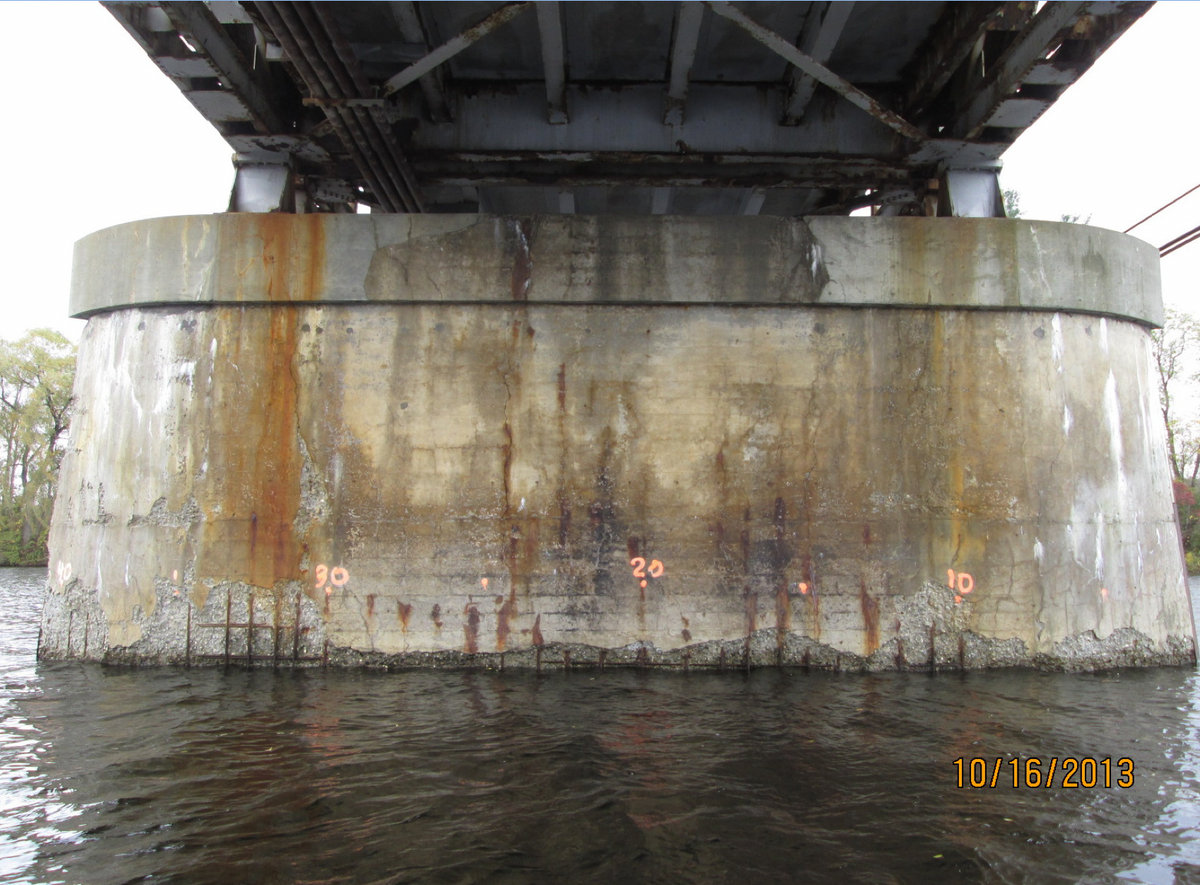
A reader wrote in recently:
Thank you for the interesting article about the Lyme-East Thetford bridge, published in the 24 January Sidenote. A question, if you can answer it: Can you tell us whether the bridge is safe to use?
In other words, what is the level of danger or risk in using the Lyme-East Thetford bridge? Here’s what we know:
NHDOT has not closed the bridge
The New Hampshire Department of Transportation (NHDOT) has kept the bridge open. The bridge would be closed if it was determined that it was unsafe. The bridge did receive some maintenance work in 2014.
However…
The bridge is narrow
The bridge is narrow at 21 ft curb to curb compared to the Orford-Fairlee bridge, historic and rehabilitated, which is 24 ft curb to curb. There is no shoulder and no sidewalk like the ones on the Orford-Fairlee bridge, which increases the danger or risk to pedestrians and cyclists. There is also a danger or risk to oncoming traffic when oversized vehicles use the bridge; each travel lane is approximately 9 ft with a supposed-to-be 2 ft spacing for the yellow line in the center. While this has proven generally manageable for its traffic over the years, there is strong public support for a wider bridge and/or infrastructure for pedestrians and cyclists.
The railing is probably unsafe
While updating the railing is part of the scope of the bridge’s planned rehabilitation, the degree of protection from danger or risk provided by the current railing is unknown because it has not been crash tested. Further, it does not meet current safety standards. The recommended rail system for a rehabilitated bridge calls for steel railings mounted directly to the concrete curb. The proposed system has been crash tested and is approved by the Federal Highway Administration.
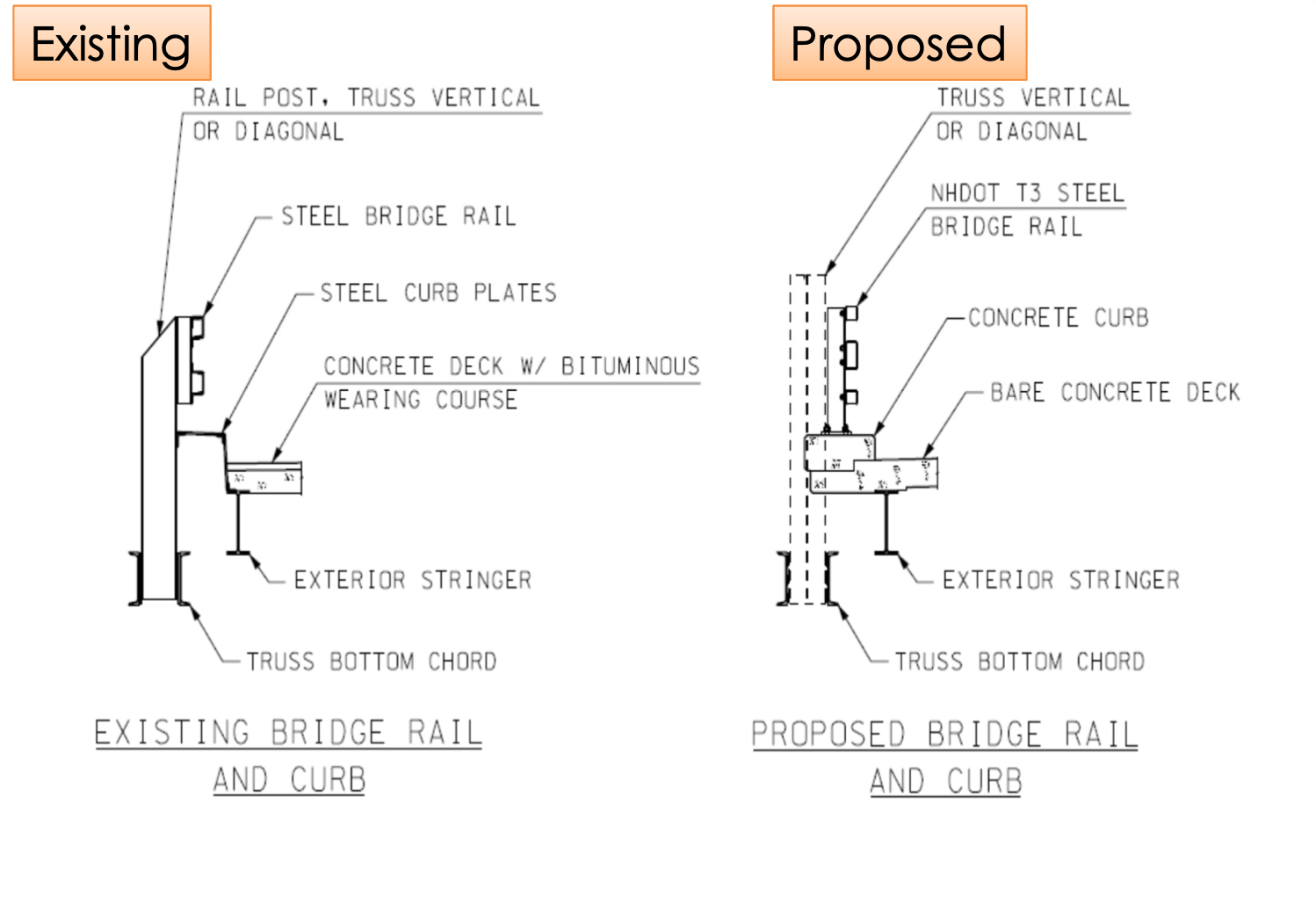
The current rail system – like other sections of the bridge – promotes pack rust and has deteriorated significantly. The March 2021 bridge inspection report says there is “Heavy rust and section loss with many holed areas in [the] bottom rail.”
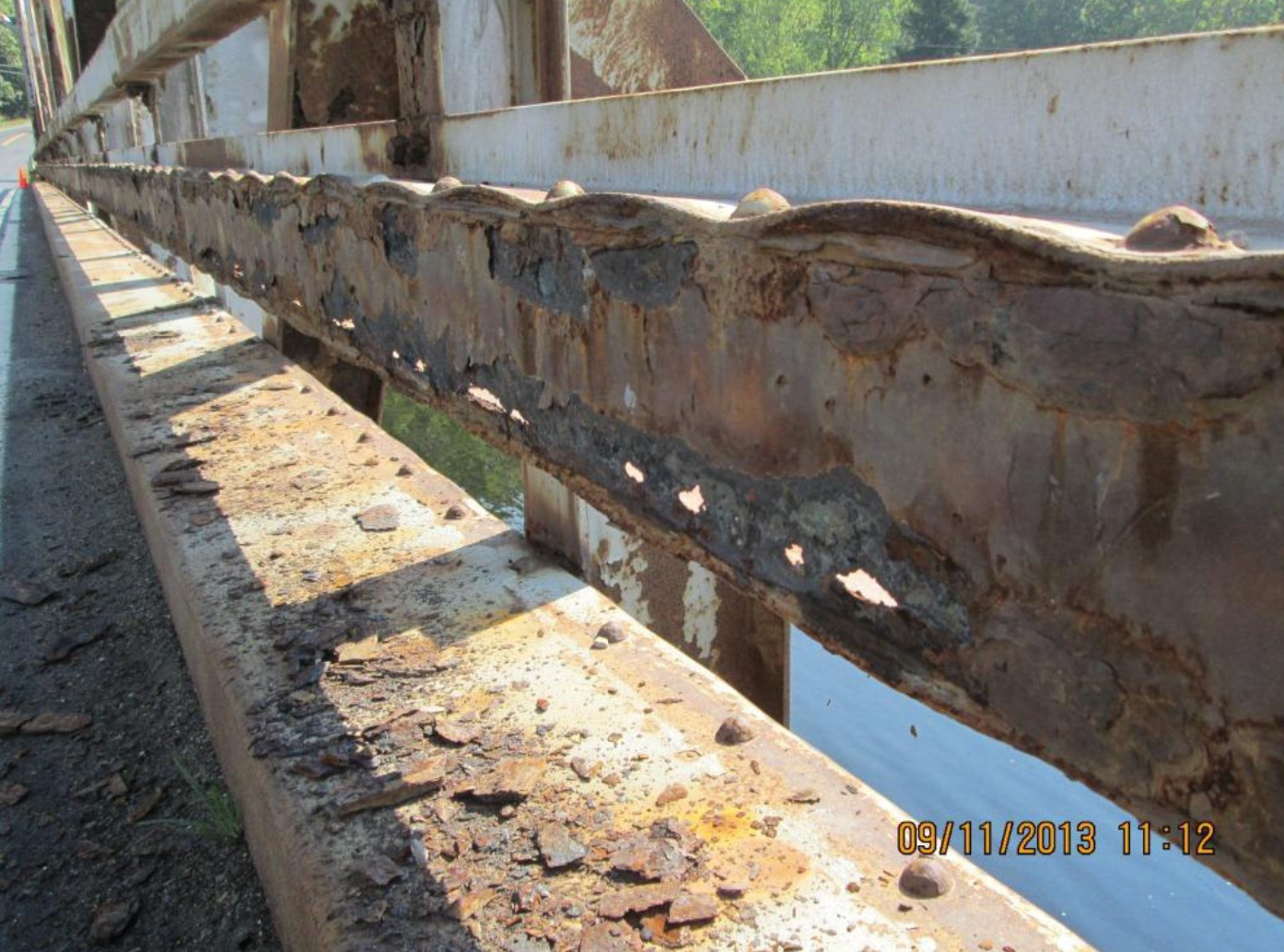
The bridge is old
The bridge is 85 years old and has never been rehabilitated beyond a few coats of paint, according to the 2018 HAER report. (In contrast, the comparable Lancaster, NH-Guildhall, VT two-span Parker truss bridge was only 67 years old when it was replaced with a brand new bridge
In 2013, the year the bridge was added to the state’s Red List for its poor condition, NHDOT performed a detailed bridge inspection and load rating analysis report. As a result, the bridge was restricted to one lane of traffic and a 15-ton weight limit. In 2014, some maintenance was performed on the bridge floor system to repair some of the major corrosion and return the bridge to two lanes of traffic.
That said, the steel used in the Lyme-East Thetford bridge is not galvanized or otherwise coated and paint is chipping or bare, so it is rusting. As steel rusts, it both expands and loses mass, undermining its structural integrity. The March 2021 bridge inspection report states that there is “10% section loss at connections and tie plates in areas,” and “15% section loss on bracing connection plates at floor beams.” In addition, there is “up to 75% section loss on [the] lower web with [a] few small holes in [the] exterior beams, especially near [the] west abutment and pier with 25+% loss on flanges.”
With rust and a few holes throughout, the bridge inspection report’s structural evaluation is “minimum tolerable.”
NHDOT was originally hoping to start work in 2018, but due to a lack of funding and challenges acquiring the necessary right-of-ways from abutting property owners, that process was delayed until 2021. Lack of bids in 2021 delayed work further. Assuming there are bids in 2022 and work begins in 2023, it will have been a full decade from when the bridge was added to the Red List to the start of substantive repairs.
The bridge has a reduced weight limit
The Rogers Rangers bridge connecting Lancaster, NH and Guildhall, VT was replaced as it approached its 70-year service life and a legal load limit of 20 tons. “Similar structures in the region have suffered this fate,” a USDOT report on that bridge says. The Lyme-East Thetford bridge has a posted weight limit of 15 tons, even after the 2014 repair work to its floor system. For context, bridges today are designed to have an unposted legal weight limit of 40 tons.
A 72-passenger school bus can weigh roughly 15 tons. Fire trucks, dump trucks, farm equipment, and other heavy trucks can easily weigh more. In the 2014 minutes of a public hearing held on the bridge’s rehabilitation in Lyme, a resident stated that they farm two miles south of the bridge. The resident said they use the bridge every day and have farm trucks that need to cross the bridge that are 25 tons when loaded. At the same meeting, it was stated that Lyme does not have a source of gravel; rather, gravel used by the Town of Lyme is brought across the bridge from Thetford. “The Town has stockpiled gravel,” the minutes read.
Heavier vehicles cause more stress to bridges and shorten their lifespan because their weight is concentrated. Fifteen 1-ton vehicles with a load that’s distributed and therefore spread out causes less stress to bridge members than one 15-ton vehicle concentrating most of its weight in one place due to axle configuration represented as point loads. Federal weight limits were created in the 1970s to limit the weight of a vehicle in relation to its length so that weight would be more evenly distributed across bridge members. The intent was to extend the life of America’s roads and bridges and decrease the risk of structure failure.
The central concrete pier needs to be replaced
The March 2021 bridge inspection report says that the reinforced central concrete pier has “cracks, heavy spalls with rebar exposed and delaminations.” There is rebar exposed on the east and west face of the pier with section loss at the mean waterline.
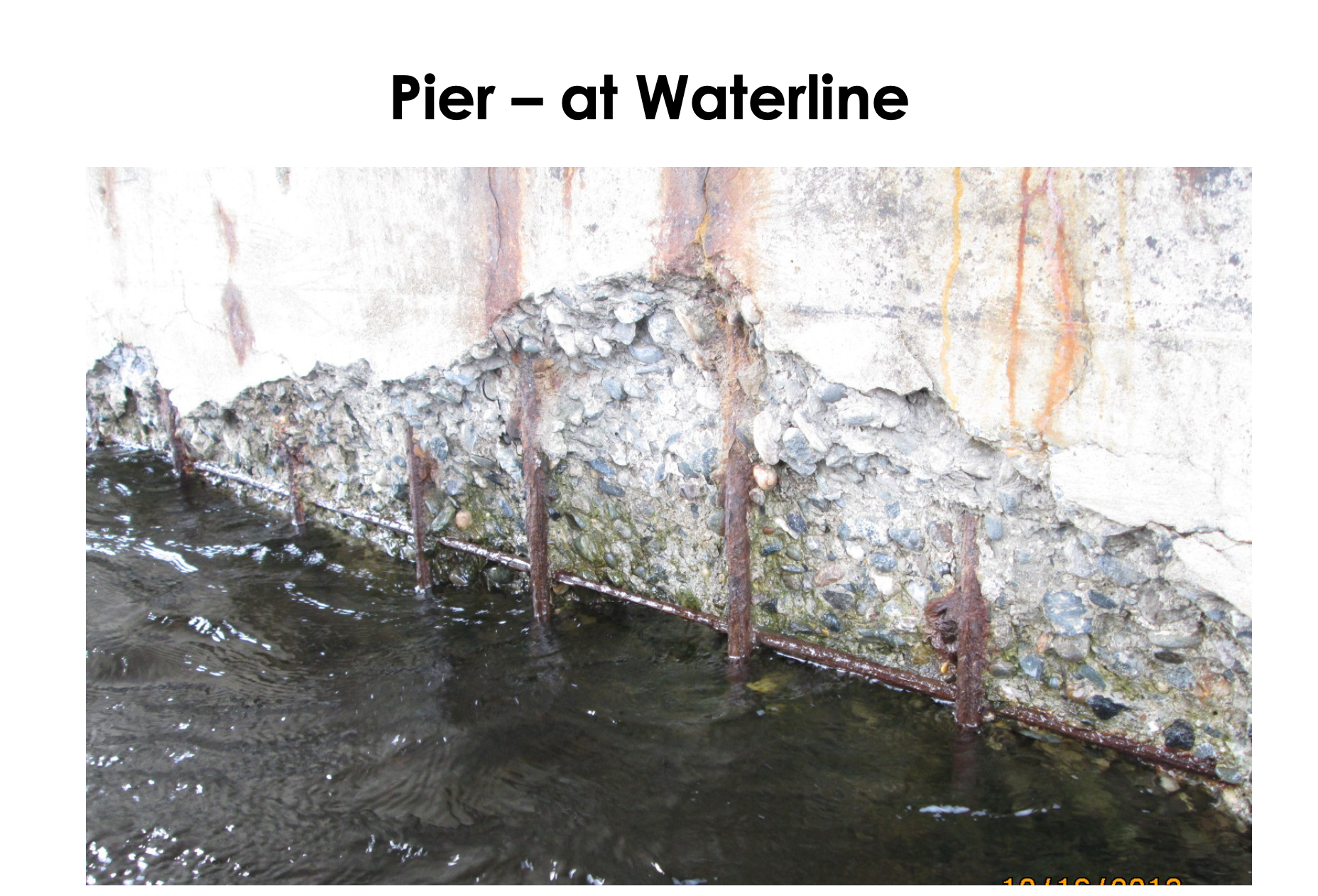
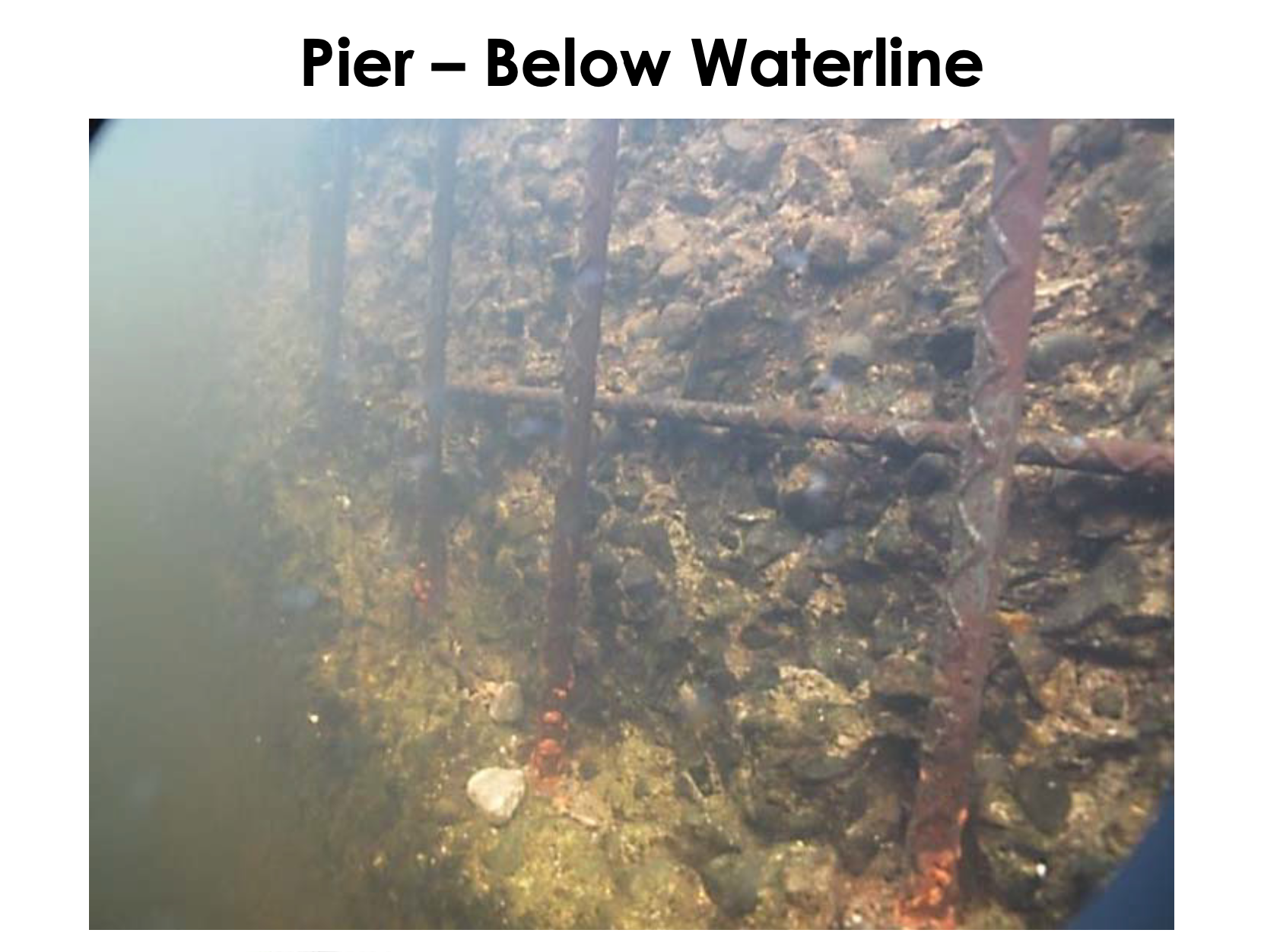
Core samples taken in 2013 reveal cracking and loose, fragmented concrete.
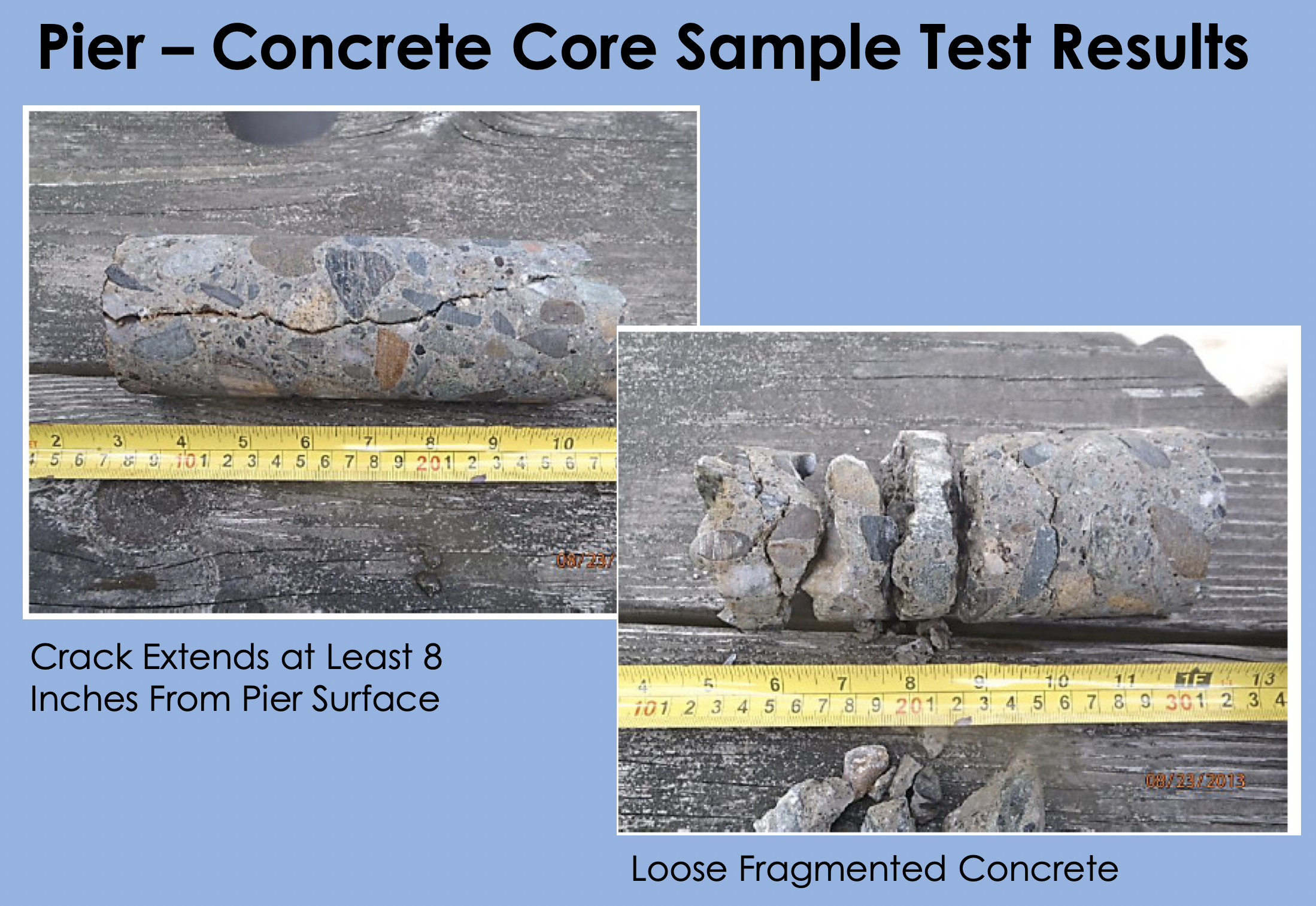
In 2015 minutes from a public hearing in Thetford, Bob Juliano of NHDOT explained the condition of the pier: “... the pier has extensive cracking and spalling of concrete and test results revealed low air entrainment and the presence of alkali silica reactivity (ASR) and the pier must be replaced. With ASR, the aggregate used [in 1937] in the concrete reacts with moisture and expands, and thus the pier is deteriorating from within.”
Juliano went on to explain that the deterioration near the water line was likely due to freeze/thaw cycles and low air entrainment, which reduces the concrete’s resistance to the damage posed by freeze/thaw cycles since air voids act as tiny expansion joints.
It was also noted, both in the 2014 hearing in Lyme and the 2015 hearing in Thetford, that the water line rose when the Wilder dam was constructed. Completed in 1950, 13 years after the Lyme-East Thetford bridge, the dam has a 45-mile long reservoir. The 1936 Ledyard bridge – which survived the 1936 flood months after its completion – was raised by 3 feet in 1949 because the dam had raised the Connecticut River by 13 feet between Hanover and Norwich. In the 2014 Lyme hearing, Bob Landry of NHDOT said the water level at Lyme-East Thetford rose 10 feet.
“The current relatively high water levels (compared to historic levels) on this section of the river are attributable to the 1950 Wilder Dam located downriver in Lebanon, New Hampshire.”
- HAER report
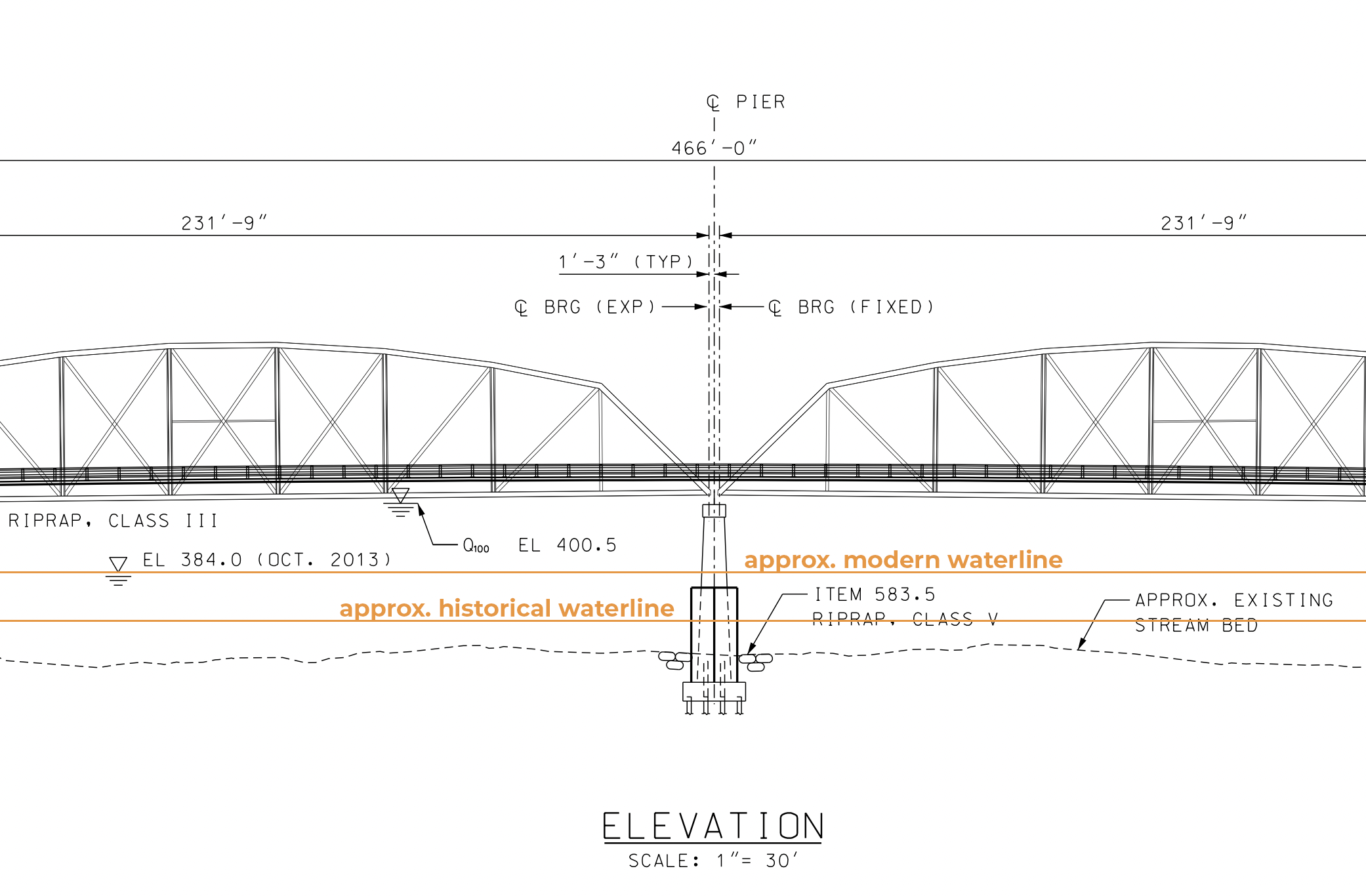
The alkali–silica reaction (ASR), more commonly known as "concrete cancer", is a deleterious swelling reaction that occurs over time in concrete between the highly alkaline cement paste and the reactive amorphous (i.e., non-crystalline) silica found in many common aggregates, given sufficient moisture… ASR can lead to serious cracking in concrete, resulting in critical structural problems that can even force the demolition of a particular structure. The expansion of concrete through reaction between cement and aggregates was first studied by Thomas E. Stanton in California during the 1930s with his founding publication in 1940.
- Wikipedia
To make matters worse, steel expands as it rusts, including steel inside concrete piers (commonly called rebar). Concrete is not strong enough in tension to contain the expansion of steel, causing additional cracking, reducing structural integrity, and allowing for further water penetration. There is more oxygen in water than air, so steel rusts faster underwater.
The central concrete pier is not the only cause for concern. The concrete abutments on either side of the river are also showing signs of deterioration. Specifically, “there are heavy spalls on the west abutment and southwest wing” and “Most of [the] repaired concrete in [the] west backwall [has] deteriorated,” the March 2021 bridge inspection report says, noting additional exposed rebar. There are “fine cracks” in the east abutment.
Overall
The bridge rail, rail transition, and approach rail ends are “substandard.” The bridge deck geometry is “intolerable” and needs to be replaced, and the structural evaluation, as noted above, is “minimal tolerable.”
Overall, the structure and substructure of the Lyme-East Thetford bridge are rated 4 – poor condition – making this bridge “structurally deficient” by federal standards. This does not mean that the bridge is unsafe. It means the bridge must be monitored and maintained consistently.
A rating of 4 means that there is “advanced section loss, deterioration, spalling, or scour.” Not as bad, in contrast, to ratings of 3, 2, 1, or 0.
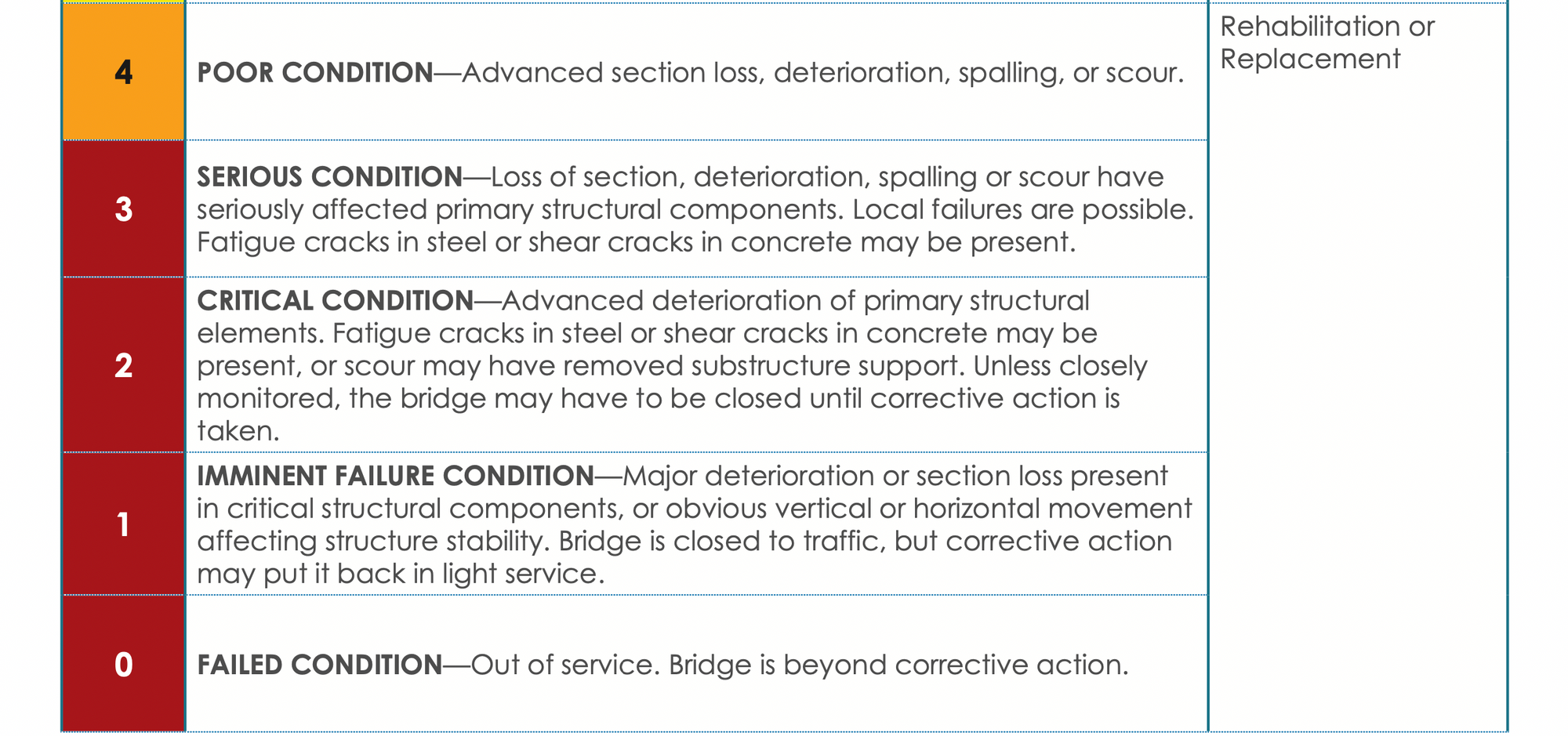
The bridge is unlikely to be closed. Instead, without rehabilitation, it is more likely to see reductions in its legal load limit. However, if the legal load limit were ever to drop to 3 tons or below – insufficient for most vehicles to cross – the bridge would have to close.
